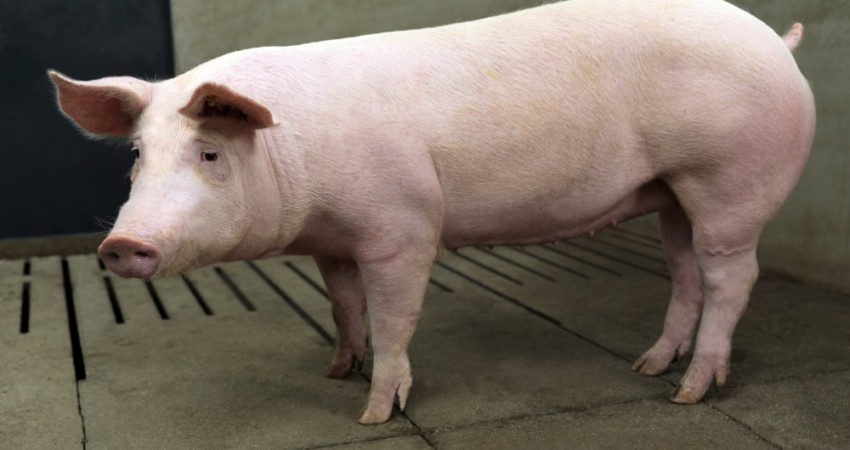

In selecting the breeding stock, regardless of the breed, there are specific characteristics a farmer should be interested in. They include:
The neck should be moderately long. Shoulders should have a smooth downward slope while the forearm should slope downward and slightly forward when viewed with the pig standing steadily at ease.
The area between the hoof and the joint with the dew claws is called the pastern. It should have a gentle forward slope. Both the toes of the back and front legs should be large and even-sized.
The buttock, otherwise known as the rump; and the top line should be flat, with the tail sitting high on the rump. Hind legs should be straight but with a well-defined curvature of the joint below the knee.
This is called the hock joint and is the equivalent of the heel in humans. Often, farmers confuse the joint with the knee joint. In most four-legged animals, the knee joint is attached to the body by a fold of skin and muscle called the knee-fold.
Finally, the pig should have long slender teats that are well-spaced. Pigs have between six and 32 teats running in two parallel lines on the underside of the body from the chest to the groin. On average, pigs have 12 to 14 pairs of teats. Each teat projects milk from its secreting organ called the mammary gland.
The glands in pigs are separate from each other. Good breeding pigs should have 12-14 teats. In countries with pig breed registry, a purebred pig should have a minimum of 12 good teats for it to be registered. The number of teats is important as it ensures the pig can suckle at least 12 piglets at once. This reduces fighting and injuries among the piglets as each will have a suckling position to itself.
What to look for.
When inspecting the teats, one should ensure that all are potentially functional. Teats that are inverted inwards such that they do not project outwards from the skin surface will most likely not be suckled when the pig gives birth.
Mammary glands with such teats dry off within three days from the date of birth and become non-functional. Some sows have too many teats known as supernumerary teats and such tend to be non-functional.Gilts with supernumerary teats should not be selected for breeding.
Finally, one should confirm that the farm selling the pigs has good record-keeping on the animals regarding the mothering performance of the sows, growth rate of the piglets and the presence of inherited deformities such as hernias in the piglets.
Hernia is the protrusion of body organs such as intestines into the umbilical cord area or scrotum. The condition is inherited from the boar.
Gilts from mothers that wean less than 10 piglets should be avoided. It is also advisable to avoid gilts from mothers with consistent record of a disease combination called mastitis, metritis and agalactia abbreviated as MMA.
Mastitis is the infection of the mammary glands. Metritis refers to infection of the uterus while agalactia is lack of milk production.
Sows with MMA do not produce milk and piglets may all die unless they are fostered by another mother or fed artificially with eggs and cow milk
 Contact Jaguza Support
Contact Jaguza Support